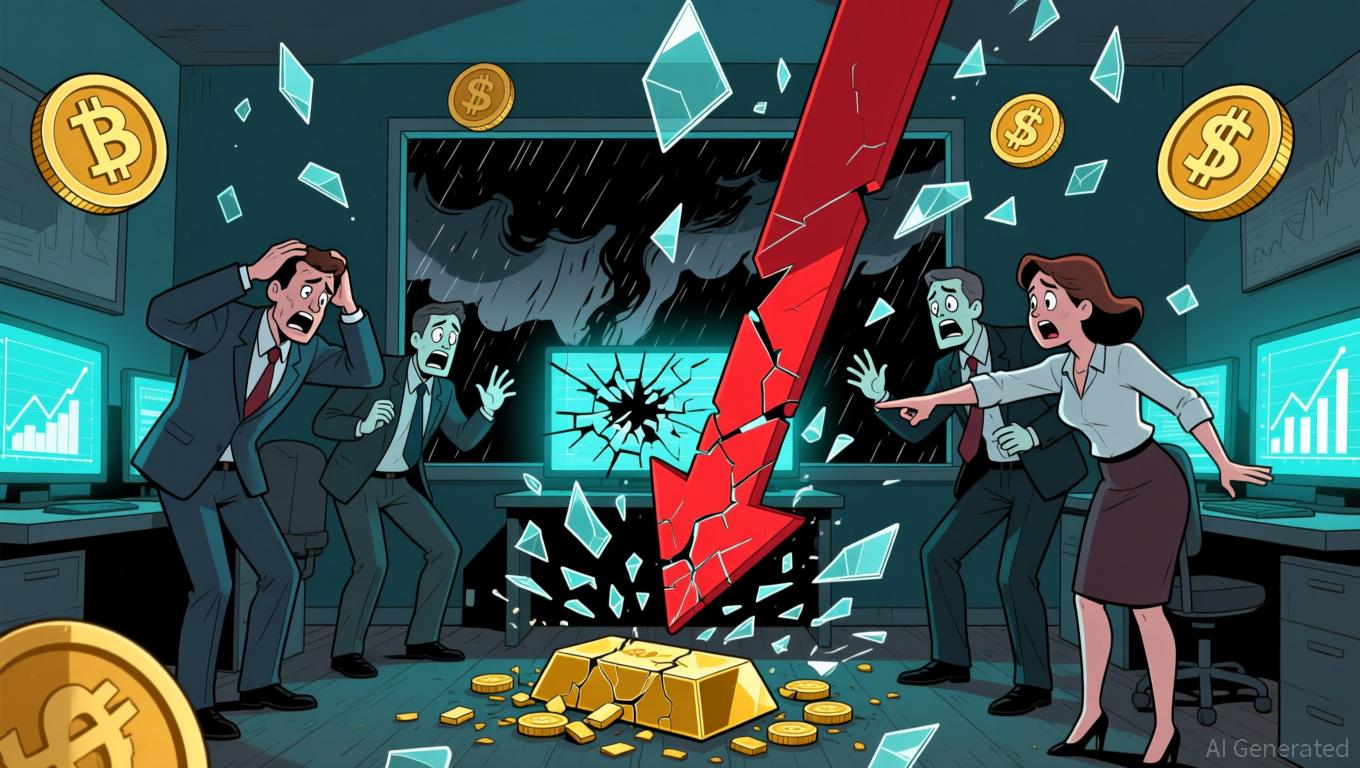Bitcoin Updates: Crypto Fear Index Drops to 11—Is This the Market Floor or Could Prices Fall Further?
- CMC Crypto Fear and Greed Index hits record low of 11, reflecting extreme market panic amid heightened volatility and regulatory uncertainty. - Bitcoin's 30% and Ethereum's 41% declines mirror broader selloffs, with MSTR losing 60% and BitMine dropping 52% as crypto-linked equities collapse. - Bank of America warns of 2018-style capitulation risks from stretched valuations and Fed rate-cut expectations, while PrimeXBT expands Solana integration to navigate sector challenges. - Analysts debate cyclical bo
The CMC Crypto Fear and Greed Index has dropped to an unprecedented low of 11,
The downturn in digital assets is echoing broader financial market instability. The Nasdaq Composite, which is heavily influenced by AI and technology stocks, has

The slump in cryptocurrencies has also led to steep declines for crypto-related stocks.
Michael Hartnett of Bank of America has
Despite the negative outlook, some platforms are adjusting to the changing environment. PrimeXBT, a prominent crypto and CFD trading platform, has
The record low of the CMC index signals a widespread sense of caution. Although history shows that periods of extreme fear can sometimes precede market recoveries, investors are still concerned about regulatory changes and macroeconomic pressures. For now, attention is centered on Bitcoin's price trends and the Federal Reserve's policy direction, with analysts such as Hartnett
Disclaimer: The content of this article solely reflects the author's opinion and does not represent the platform in any capacity. This article is not intended to serve as a reference for making investment decisions.
You may also like
Solana's Abrupt Decline: Uncovering the Causes and Implications for Cryptocurrency Investors
- Solana's 30% Q4 2025 price drop revealed diverging investor behavior: institutions accumulated 24M SOL while retail investors sold at losses. - Technical strengths (2s transactions, $0.01 fees) persist, but Bitcoin Munari's 2027 Layer-1 transition raised short-term liquidity concerns. - Institutional confidence via GSR's upgraded tools and strategic asset-class positioning contrasts with retail panic, signaling ecosystem maturation. - Market dynamics highlight the tension between innovation risks (infras
Cardano News Update: Midnight Achieves 24 Billion Token Milestone at 0.80 ADA, Driven by Cardano's Minimal Fees
- Midnight's Cardano-based privacy sidechain minted 24B NIGHT tokens at 0.80 ADA ($0.52), showcasing Cardano's low fees and scalability ahead of Dec 8, 2025 launch. - The project uses ZK-SNARKs for privacy-compliant transactions and a dual-token model (NIGHT for governance, DUST for shielded payments) with cross-chain synchronization. - Token distribution will occur in phases over 360 days, with initial allocations to early contributors and planned exchange listings to stabilize market dynamics. - Cardano'

ZKP's Code-Driven Fairness Transforms Cryptocurrency Auctions
- Zero Knowledge Proof (ZKP) launches a transparent, fair, anti-whale ICA model using real-time demand and on-chain data for token distribution. - Daily 24-hour auctions allocate 200M tokens via dynamic pricing, with contributions in ETH/USDC/ZUSD determining final prices through algorithmic calculations. - Smart contracts enforce $50,000 per-wallet caps to prevent market manipulation, ensuring equal access through code-enforced fairness. - Pre-built infrastructure including hardware/software and a decentr

Bitcoin’s Sharp Decline: Caution Sign or Chance to Invest?
- Bitcoin's $87,000 drop reflects macroeconomic pressures from Fed policy shifts and $2.7T U.S. stock market losses, with Ray Dalio questioning its reserve asset utility. - The Bitcoin for America Act enables tax payments in BTC, creating a 4. 3M coin Strategic Reserve potentially worth $14T at $3.25M/coin, signaling institutional confidence. - Global regulators (MiCA, FIMA Act) reduce crypto ambiguity while Bernstein sees $80,000 as a potential buying zone amid ETF inflows and Trump-era policy tailwinds.